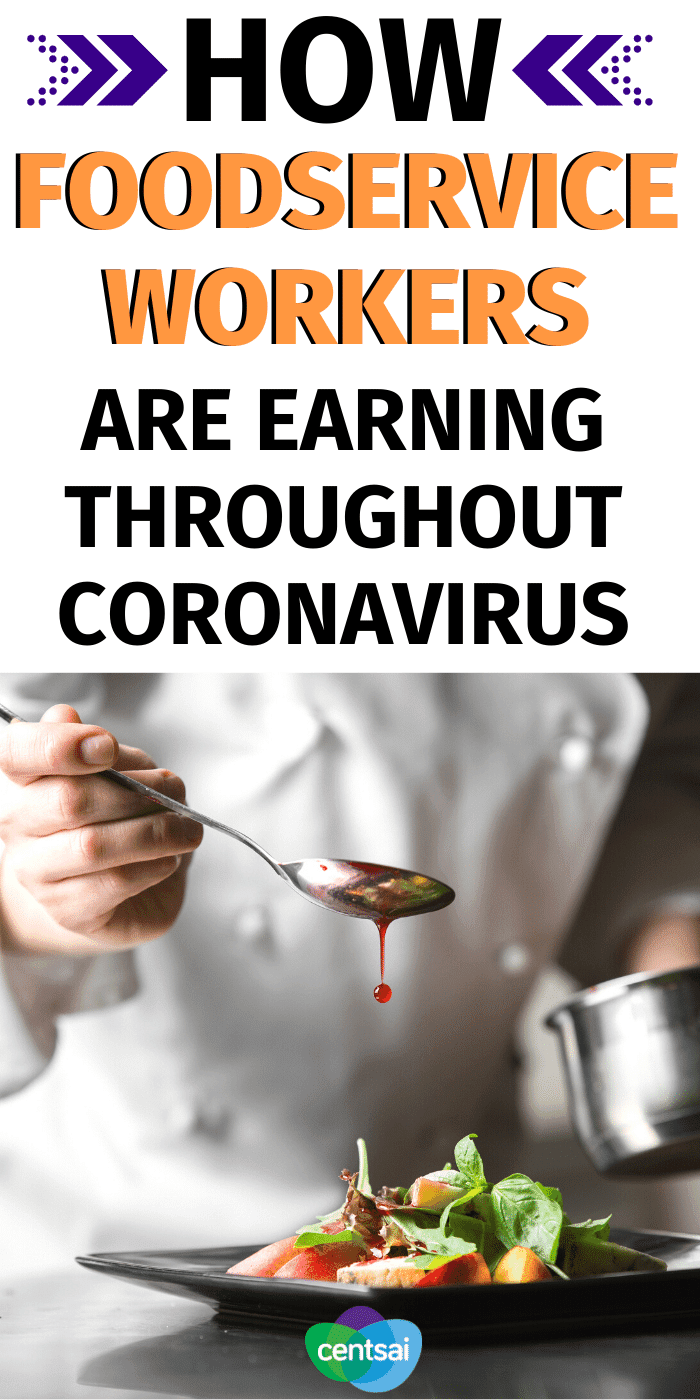
Perhaps the most immediate change stemming from COVID-19 was the shuttering of bars, coffee shops, and restaurants — a change that was swift and stark in my neck of the woods.
 Overnight, the various businesses and watering holes that dominate the streets of Bushwick, Brooklyn, the seemingly innumerable cocktail lounges and trendy eateries that have attracted young professionals to this (quickly gentrifying) area, shut their doors indefinitely, fundamentally altering the dynamic of the neighborhood and putting thousands of baristas, bartenders, servers, and line cooks out of work.
Overnight, the various businesses and watering holes that dominate the streets of Bushwick, Brooklyn, the seemingly innumerable cocktail lounges and trendy eateries that have attracted young professionals to this (quickly gentrifying) area, shut their doors indefinitely, fundamentally altering the dynamic of the neighborhood and putting thousands of baristas, bartenders, servers, and line cooks out of work.
The Stats: How Are Foodservice Workers Impacted During Coronavirus?
Of course, north Brooklyn is far from the only place in the city (or the nation) where foodservice workers woke up to find themselves without jobs during the coronavirus pandemic. These workers accounted for roughly 5.5 million layoffs in the immediate weeks following our nationwide shutdown, according to the Bureau of Labor Statistics.
Besides bearing the brunt of coronavirus’ economic impact, these professionals also face job security highly susceptible to the economy’s general health, accounting for 13.4 million vulnerable positions per a study conducted by the McKinsey Global Institute.
With the economy showing no signs of an immediate nationwide reopening, foodservice professionals are placed in a particularly tough position during this crisis — those without jobs are unable to return to work in the near future (or may not have jobs to return to), and those still employed are likely facing significantly reduced earnings.
And as Congress fumbles further individual stimulus beyond a one-time $1,200 IRS reimbursement — in essence chump change in relation to the myriad monthly expenses most Americans have — professionals in the restaurant and service industry are forced to pivot toward novel ways of earning income.
I sought out a handful of foodservice professionals to better understand how they’re putting food on the table, literally and figuratively, during this time of corona — and how their individual successes might inspire others in the same boat.
How Foodservice Workers Roll With the Changes During Coronavirus
Perhaps the most immediate transition for the foodservice community came in the form of reduced hours and alterations to “business as usual” where operations continued, albeit in a manner that accommodates social distancing guidelines.
Such adjustments have come in many forms, but for foodservice professionals who are still employed, there have been two predominant types of changes — businesses shifting toward a takeout-only model and a reduction in hours — both taking place, in most cases, after a brief period of closure wherein owners re-examined how to best proceed with operations throughout this unprecedented period.
Dealing With Reduced Hours
“Our shop closed down for a bit before reopening for deep cleaning, and then, in late April, for contactless pickup and delivery-shipment of beans,” says Northern Virginia–based barista MacKenzie Reagan.
“Even when we reopened, and I was able to get some hours, this week I was scheduled for 30, which can still be a struggle,” Reagan states, noting that some weeks she’s scheduled for fewer than 20.
“A big part of the scheduling issue is that we legally can’t have all 30-odd people in the building at once, so no one’s going to get a full 40 hours every week,” she adds.
Coronavirus Challenges: Foodservice Workers and Partial Unemployment
These changes are the new normal for many foodservice workers, with a number of them filing for partial unemployment benefits to fill in for the labor hours they would normally have worked pre-coronavirus.
General delays in processing for partial unemployment insurance, however, put many in the difficult position of having to scrounge by on lesser earnings while they await help — especially those who are finding themselves out of work for the first time.
“I’ve called the New York unemployment office three times this week and have just gotten long wait times, the individual on the other side hanging up on me, or both,” says line cook David Favelli. “I’m working 15 hours a week currently, which is better than nothing, but without additional help it’s getting bad. I imagine I’ll probably be late paying my rent this month.”
The Importance of Self-Advocacy for Foodservice Workers During Coronavirus
Favelli emphasized that his ability to continue working at his current employer, albeit in a reduced capacity, was in part due to his own self-advocacy.
“I may have been a bit annoying, but when I knew my restaurant was going to reopen, I emailed my employer a handful of times to see if they had any work available,” Favelli says. “While I think I had done a pretty good job at my work beforehand, it’s possible that when it came time to choose who would be re-hired, my stressed availability put me at the front of their decision making.”
Despite long wait times being a common occurrence, contract employees and self-employed individuals who would normally not qualify for unemployment benefits are covered throughout the pandemic, regardless of where they are in the country, through the CARES Act’s Pandemic Unemployment Assistance program. This benefit pays your state’s unemployment insurance, plus an additional $600 a week for fully unemployed workers, for up to 39 weeks.
With some businesses able to continue operating in a reduced capacity as the pandemic enters its third month, it’s likely that the approach of working-as-one-can and hoping unemployment benefits will pick up the remaining slack, will remain the de facto method of maintaining a steady income.
Crowdfunding in the Community
With revenue down as businesses remain partially opened (or closed entirely), some foodservice professionals have turned to the community to find help throughout COVID-19, often using crowdfunding platforms or gift card purchases as a means of furnishing wages.
Veronica Zutic’s Story
This approach proved somewhat fruitful for Veronica Zutic, a manager at coffee shop/bakery/restaurant Ellē in Washington, D.C. Zutic, alongside her coworkers, spearheaded an employee relief fund on popular crowdfunding platform GoFundMe, raising over $13,000 in donations since the campaign started in late March.
“I worked with one of the bakers and one of the sous chefs, wrote up the language, set up the page, and blasted it to everyone,” Zutic recalls. “And during that first week where people were getting laid off, and people were aware it was happening because all their favorite restaurants were closing, that was the time when people were the most generous.”
Selling Merch
Besides contributing directly to the GoFundMe, Zutic noted that individuals could purchase gift cards from Ellē’s online shop and tack on an additional donation that goes directly to staff, with the option to set up a recurring donation as the pandemic continues.
“We’ve raised $13,000 dollars in the GoFundMe alone, and to supplement that my boss Nick, who is running online ordering, set up the online store with options to donate anywhere between $10 to $100 alongside their purchase,” Zutic adds.
“Many in the community have set up recurring donations,” she says. “People have been very generous, lots of friends and regulars have donated multiple times. It’s been awesome.”
Strong Leadership
Zutic said that much of the campaign’s success was due in part to transparency and cooperation between herself, her colleagues, and the owners.
“The crowdfunding initiative was recommended to me by ownership. None of the owners wanted to be involved in the process, or for anyone to think any of the money was going toward operating costs,” she says.
Zutic added that she felt “very lucky to be working under owners who are incredibly concerned about the people working for them.”
“That’s an incredible blessing most people in this industry don’t have,” she says.
In addition to GoFundMe, foodservice professionals may find success in similar platforms like Indiegogo, Causes, and Kickstarter for their respective fundraising goals.
Pivoting Professionally as Foodservice Workers During Coronavirus
Beyond continuing work in a limited capacity or turning to the community for donations, baristas and barbacks alike are seeing ways in which their professional skill sets can be of use elsewhere.
MackKenzie Reagan’s Story
To supplement her hours at the cafe, MacKenzie Reagan recently set up a Patreon account where she can showcase her professional background as a writer for a monthly donation ranging from $5 to $20.
“I knew I needed something else to supplement my income,” Reagan said after seeing her weekly hours take a dip at the onset of the pandemic. “Writing is really my only other skill, so Patreon, where readers pledge a monthly fee to view my content, seemed like the most logical choice.”
Regan also pledged to donate 10 percent of that money to the American Foundation for Suicide Prevention. “That way, I can make money, but also still donate some money. Win-win,” she added.
Some career pivots tend to be more unorthodox than others.
For example, Queens-based bartender Daniel S. shifted from making drinks to delivering marijuana door-to-door soon into the spread of COVID-19.
“A week before the coronavirus hit, I had to do an interview over the phone for the position, plus the second interview that they required, as they’re pretty particular about hiring,” he recalls. “Four days after that, and after I pestered them about the position because I knew corona was coming, they hired me.”
Despite the unusual shift in careers, he says his existing customer service skills, as well as the knowledge of one’s product, proved helpful and fruitful in this new job, regardless of its legality.
“I’d say that speaking and customer service — you know, having that service smile, is helpful,” he says. “When you’re delivering, you have to be nice, you want your client to have a good time, and if they have any questions, you want to be able to answer them.”
The Importance of Transferrable Skills
Daniel’s approach to finding new opportunities during a period dominated by business closures echoes some savvy career advice: It’s often necessary to showcase your previous experience is applicable in novel ways.
“A good rule for any job hunter seeking a new role in a new industry is to identify your transferable skills, and portray those first on your résumé,” says recruitment and career coaching professional Matthew Warzel, president of résumé-writing firm MJW Careers.
“Having a solid summary up front mentioning your ability to transfer seamlessly into a new role, based on your previous experience and education, goes a long way,” Warzel adds.
Understanding the full breadth of skills acquired, and the ways in which they can fit into new positions, will likely be key for foodservice workers as bars and restaurants remain changed indefinitely. Such professionals might find inspiration in new opportunities posted on staffing websites such as FoodStaff and Qwick as the pandemic continues.
Foodservice Workers During the Coronavirus Pandemic: The Bottom Line
The state of America’s foodservice professionals remains precarious as COVID-19 quietly rages on and opportunities remain scarce, but certain adjustments can help alleviate the financial pain of our current lockdown.
Some success can be found in taking a piecemeal approach to work, seeking out new opportunities within the field of one’s professional abilities, and turning to the community throughout this unprecedented economic shift.
While these solutions aren’t perfect, they represent ways to bolster earnings for barbacks, baristas, servers, and waiters while much of the economy remains in an indefinite hibernation.
Follow CentSai’s COVID-19 page for more updates as the pandemic continues.












